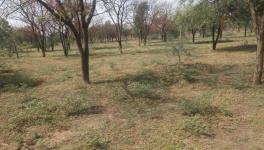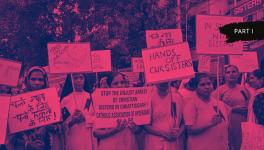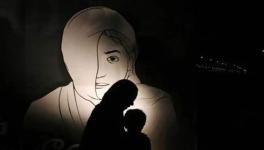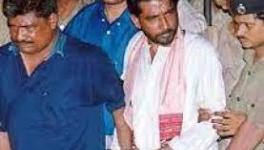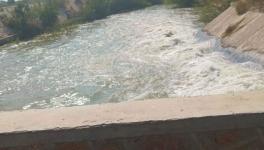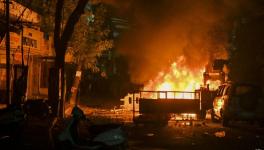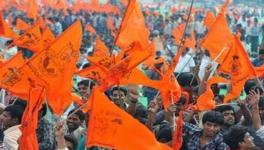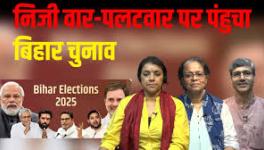What I learnt in Pehlu Khan’s village: Not Muslims, starvation is killing cows and bullocks
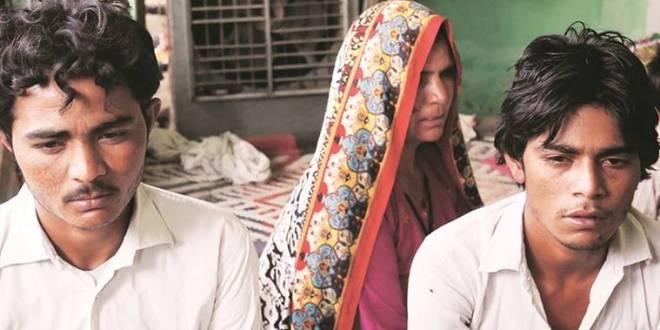
April 1, 2017 was a dark day when Pehlu Khan, a farmer from Jaysinghpur village in Mewat district, Haryana was thrashed to near death by a mob at 6 PM in Behror town of Alwar district, Rajasthan on the Delhi-Jaipur highway.
His two sons Irfan (23) and Arif (20) and two other youth, Ajmat (24) and Rafiq (22), were brutally beaten and critically injured. They had purchased cows in Jaipur bazaar and were carrying them to their village/ relatives in two vans when cow vigilante activists, riding motor bikes, stopped their vans, pulled them out, aroused a mob and thrashed them with lathis and sticks. Police came half an hour later, took these five people to Kailash Hospital. On April 3 Pehlu succumbed to injuries while the other four returned home.
I visited Behror on April 7 and Jaysinghpur on April 9. For Behror, I took an Alwar bound bus at 10:45 am from Dhaula Kuan, Delhi. The conductor was compassionate. I gave him my book, Soch swavlamban aur Sanskritik Punarjagaran. Following his advice I got down at Kishangarh at 2 pm and took a tempo to Khairthal.
A young school teacher walked with me to the bus stand and got me into the Kotputli bus. I got down at a town where I got the bus to Behror. By my side was sitting a young man Amit Kumar Yadav. He gave me a fairly objective description of the incident and offered to take me to the site on his motor bike in Behror.
At 4:30 pm I reached Behror. Amit took me to the flyover on the Delhi-Jaipur highway. Afterwards I sent him home and began talking to nearby shopkeepers, vendors, barber, cobbler. Most people said they were not there on that day.
One shopkeeper reflected sensitivity and said that the mob had gathered at both the ends of the flyover. The nearby end where I was standing was the one where a van was stopped and the mob surrounded it. The mob thrashing took place at the other end.
A driver said that these were the Bajrang Dal and ‘Gau Rakshak Dal’ activists who did this. A few other people also said that. Fertilizer firm owner Om Vir Yadav said Bajrang Dal activists didn’t mean to kill the cow smugglers, only wanted to teach them a lesson and hand them over to the police. It was by chance that one person died in the public beating, he said. It was a lapse on the part of police who did not intervene in time.
From there I went to DSP (Deputy Superintendent of Police). He offered me seat and talked for 20 minutes. The DSP said police stopped the van and found that they didn’t have the necessary papers. I said that according to media reports these people were stopped by the cow vigilantes and they had the receipts of purchase of cows. He said ‘gau rakshaks’ provided the information and thereafter the police stopped them.
Transferring cows from one state to another requires permission from collector that was not there, the DSP said. I was unable to understand how people in police custody could be beaten up by mob. He said three people had been arrested under section 308.
The DSP also mentioned that cow smuggling had been an issue in the region. Last year 36 cow heads were found in Firozpur Jhirka. I said I had not heard of that from any one. Rather, a gruesome incident took place on August 22, 2016 when Zaheeruddin’s family was brutally attacked, his son Ibrahim and daughter-in-law were thrashed to death and daughter and son-in-law were critically injured in Deengerhedi. To this he said it was a very sad thing. I left in sorrow.
On April 9, I left home at 7:30 am, took metro to Gurgaon, tempo to Subhash Chowk and then a bus to Nunh. Jan Mohammad and his son met me there at 10:30 am and took me to Jaysinghpur.
Pehlu’s home had a sad look and his family was in deep pain. Pehlu’s sons Irshad and Arif looked very young and innocent. So was Rafiq, a thin fellow. They had suffered deadly blows and reached the verge of death, yet they had no sectarian feelings. Irshad said that they had only two vans, which were stopped by the cow vigilantes and thrashed. They lost consciousness; only remember some people saying burn them alive. Police arrived half an hour later and they were taken to hospital. What happened at the other end of the flyover, they had no idea as they had only two vans. When I enquired where their cows were now, he said he didn’t know.
We went to Azmat’s home. He was lying on a cot, in almost un-movable condition. His father came from Mathura where he is a maulvi in a mosque. He was in pain but had no bitterness, rather recalled an incident of Jawaharlal Nehru. He explained Azmat’s plight and said that he was bringing cow for his sister who lived in a village in Rajasthan near the state border.
The incident reflects unmatched terrorizing power of cow vigilante groups, their networking and close liaison with the police. The cow protection laws have made minorities vulnerable to humiliation, thrashing and killing. They are frightened to keep cows in their homes which is the only source of milk for many of them.
Over 99.9% percent Muslims have never killed a cow or a bull. They take as good care of them as any Hindu would do. The tragedy of cows (especially bulls) is not slaughtering but starvation death. Due to the arrival of tractor, harvester and truck, bulls have been rendered jobless. Poor farmers have no capacity to feed useless bulls, while their own children are hungry. Nor there are forests left to feed the bulls. Hence most bulls and old cows are dying of starvation. No middle class or high class family keep useless bulls in his/ her home.
Coupled with this tragedy is the brute display of muscle power by organised youth on Ashtami and Ram Navmi. On April 4 at 5 am I was waiting for an auto-rikshaw near IIT to go to Delhi railway station to catch a train to Aligarh. I saw herds of motorbikes. In quick succession; carrying three people each, at a speed of 100 km per hour. On my return at midnight also I saw similar youths in tens of motor bikes.
I checked with the auto drivers, they said that numerous such groups were moving around from temple to temple on 8th and 9th days of Navaratri. I realised these riders were part of a well organized network like Bajrang Dal. They would create a frightening atmosphere for anyone.
These mobilisations pose a very serious challenge to our culture and polity. A grassroots cultural movement must develop to counter them.
Get the latest reports & analysis with people's perspective on Protests, movements & deep analytical videos, discussions of the current affairs in your Telegram app. Subscribe to NewsClick's Telegram channel & get Real-Time updates on stories, as they get published on our website.









